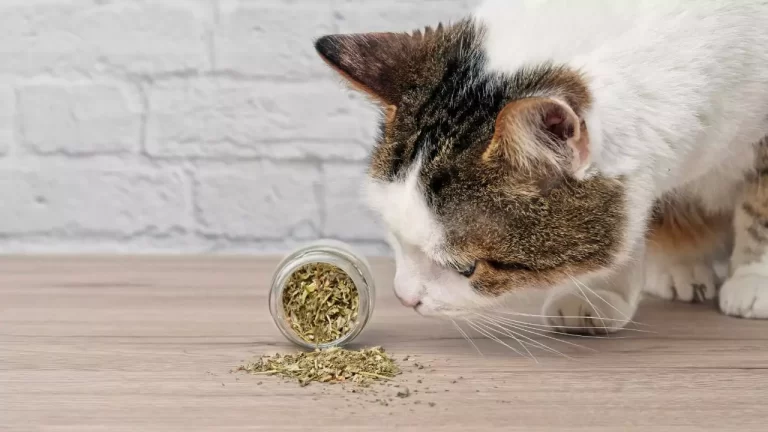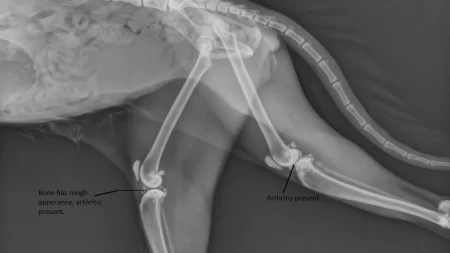Catnip is a herb that can cause various reactions in cats, ranging from excitement and playfulness to relaxation and sleepiness.
But what exactly is catnip and how does it affect cats? Is it safe for cats to eat? And how can you give catnip to your feline friend?
In this article, we will answer these questions and more.
What is Catnip and How Does it Affect Cats?
Catnip, or Nepeta cataria, is a plant that belongs to the mint family. It has light-green leaves and lavender flowers, and it grows in many parts of the world. Catnip affects cats due to nepetalactone.
When cats smell catnip, nepetalactone binds to receptors in their nose and mouth, which then stimulate sensory neurons that lead to changes in brain activity. Catnip mimics feline sex hormones, so cats that are exposed to it may display behaviors similar to those of a female cat in heat, such as rubbing, rolling, vocalizing, and sometimes even aggression. These behaviors are usually short-lived, lasting for about 10 minutes before wearing off.
When cats eat catnip, however, the effects are different. Catnip acts as a sedative when ingested, causing cats to drool, purr, or fall asleep. Eating catnip may also have some digestive benefits for cats, as we will see later.
Not all cats react to catnip the same way. Some cats may be more sensitive than others, and some may not react at all. The ability to respond to catnip is thought to be a dominant trait that is based on genetics. About 60% of cats will have a behavioral reaction to catnip, while the rest will be indifferent. Kittens under six months of age usually do not react to catnip either.
Is Catnip Safe for Cats to Eat?
Catnip is generally safe for cats to eat in small amounts. The plant is non-toxic and does not cause addiction or withdrawal symptoms. In fact, catnip may have some health benefits for cats’ digestion, as it has anti-inflammatory and antidiarrheal properties. Catnip may also help reduce anxiety and pain in cats.
However, too much catnip can cause some side effects, such as vomiting, diarrhea, dizziness, or trouble walking. These symptoms are usually mild and temporary, but they can be unpleasant for your cat. Therefore, it is important to limit the amount of catnip you give your cat and monitor their reaction.
Some cats may also have certain health conditions that make catnip unsafe for them. For example, pregnant cats should avoid catnip, as it may induce contractions or miscarriage. Cats with kidney disease or urinary tract infections should also be careful with catnip, as it may increase urine production and worsen their condition. If you are unsure whether your cat can have catnip or not, consult your veterinarian before giving it to them.
How to Give Catnip to Cats?
There are different ways to give catnip to your cat, depending on the form of the plant and the effect you want to achieve. Here are some common methods:
Fresh Catnip
You can grow your own catnip plant or buy fresh leaves from a pet store or a garden center. Fresh catnip is more potent than dried catnip, so you don’t need to give your cat as much. You can sprinkle some fresh leaves on the floor or on a toy and let your cat sniff or nibble on them.
Dried Catnip
You can buy dried catnip or dry your own fresh leaves by hanging them upside down in a dark place until they are crisp. Dried catnip can be stored in an airtight container for up to six months. You can use dried catnip the same way as fresh catnip, or you can make tea by steeping some leaves in hot water and letting it cool down before giving it to your cat.
Catnip Spray
You can buy ready-made catnip spray or make your own by mixing some water and a few drops of catnip oil in a spray bottle. Catnip spray is less potent than fresh or dried catnip, but it can still have some effects on your cat. You can spray it on toys, scratching posts, beds, or other places where you want your cat to go.
Catnip Toys
You can buy toys that are filled with dried catnip or have a pocket where you can insert some leaves. Catnip toys are great for stimulating your cat’s playfulness and curiosity. You can also make your own toys by sewing some fabric around some dried leaves or stuffing them inside a sock.
Catnip Treats
You can buy treats that contain some amount of dried catnip or make your own by mixing some leaves with wet food or tuna. Catnip treats are good for rewarding your cat or encouraging them to eat more. However, you should not give your cat too many treats, as they may contain other ingredients that are not good for them in large quantities.
The dosage and frequency of catnip you give your cat will depend on their size, age, health, and reaction. As a general rule, you should start with a small amount and see how your cat responds. You can then adjust the amount and frequency accordingly. You should not give your cat catnip more than once or twice a week, as they may become desensitized to it and lose interest.
Catnip can be a fun and beneficial herb for your cat, as long as you use it wisely and safely. By following these tips, you can give your cat a healthy dose of catnip and enjoy their amusing reactions.







